
Here’s one anecdote that captures the man. While he was jailed for political reasons in late 2005, the priest took part of his prison rations and any extra food friends and family had brought him and distributed it to hungry residents of the neighborhood outside his prison cell window.
Father Gérard Jean-Juste, one of Haiti’s most prominent liberation theology priests, died at Jackson Memorial Hospital in Miami, FL on the afternoon of May 27 due to complications stemming from leukemia and a stroke he suffered in early March. He was 63.

Within hours, the news raced through Haiti and its diaspora, particularly in Miami, where he was revered as the spiritual leader of Haiti’s refugees, whom he galvanized into a potent political force during the late 1970s and the 1980s.
Jean-Juste left Haiti in 1965 for schooling at a seminary in Canada and at Northeastern University in Boston. In 1971, he became the first Haitian Catholic priest to be ordained in the United States in a ceremony at St. Teresa of Avila Parish in Brooklyn. Eight years later, he took over as director of Miami’s Catholic Church-run Haitian Refugee Center (HRC), which had been operated principally as a charity. But as ever-growing waves of “boat-people” arrived in Florida fleeing Haiti’s Duvalier dictatorship, Jean-Juste transformed the Center’s mission into a political one, creating unease, and increasingly dismay, in the Catholic hierarchy. He and several generations of intrepid Haitian and North American lawyers and activists organized large, spirited demonstrations to denounce, in equal measures, Duvalierist repression and the U.S. government’s discriminatory treatment of Haitian refugees, who were deported back to Haiti or thrown into immigration detention centers while their Cuban counterparts were welcomed with immediate political asylum.
The HRC also became a groundbreaking legal laboratory where prominent immigration lawyers like Ira Kurzban, Ira Gollobin, Cheryl Little, and Steve Forester defended hundreds of refugees and won landmark immigration cases, forging legal precedents which serve refugee defense attorneys to this day.

As the HRC became more embroiled in political and funding battles in the Reagan years of the early 1980s, Jean-Juste and his comrades formally split the legal and political work by spinning off a political action popular organization named, in Kreyòl, «Veye Yo» (Watch Them), which set up its meeting hall across the street from the Center. Although the Center has closed, Veye Yo remains to this day the largest and most influential Haitian grassroots group in Miami, and perhaps in all of Haiti’s diaspora.
Following the fall of the Duvalier dictatorship on February 7, 1986—also the day Jean-Juste was born near the southern town of Cavaillon in 1946—Father Gerry, as he was affectionately called, began spending more time in Haiti, where he set up a Veye Yo branch and began collaborating closely with another Catholic priest, Father Jean-Bertrand Aristide.
In September 1986, the two priests organized a week-long “Youth Congress” in the southern city of Les Cayes, where some 2,000 young people from all over Haiti gathered to hear speeches by Aristide, Jean-Juste and a host of other liberation theologians and to meet in workshops to hammer out a post-Duvalier agenda. This was the seminal meeting of what would later be called the Lavalas (Flood) movement and produced the watchwords, blueprints, and militants that would catapult Aristide to the Presidency four years later.
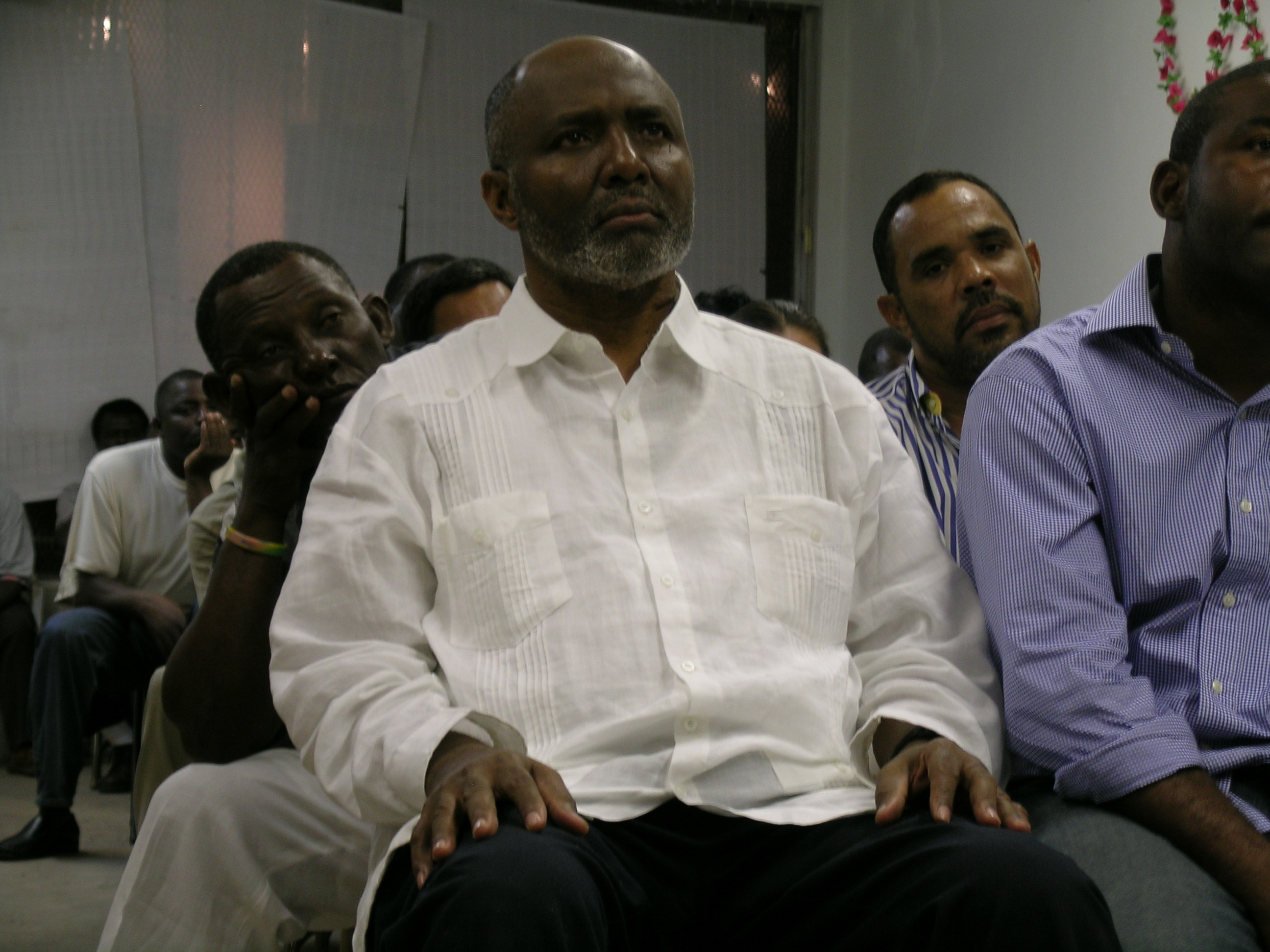
The analysis and discussions at the “Youth Congress” were sharply anti-imperialist, and often anti-capitalist. The gathering had as its principal slogan «Ayiti pa pou vann, ni an gwo ni an detay» (Haiti is not for sale, either wholesale or retail). At the time, the neo-Duvalierist military junta, the National Government Council (CNG), was enforcing Washington’s neo-liberal agenda of closing or selling state-owned enterprises (like the national ricin oil plant ENAOL) and flooding Haiti with cheap “Miami Rice,” which would decimate once-robust Haitian rice production over the next two decades.
The Youth Congress ended with a giant march to the city’s outskirts where the demonstrators dramatically tore down a large monument erected to commemorate the Marchaterre massacre, in which U.S. Marines gunned down 22 protesting Haitian peasants on December 6th 1929 during the First U.S. Occupation of Haiti (1915–1934). All during the march, Jean-Juste ran up and down the edges of the crowd with a bullhorn, as he often did in Miami, urging protesters on.
Jean-Juste continued to travel back and forth to Miami, where he led the community in demonstrations against various neo-Duvalierist governments. In one memorable 1989 action, Jean-Juste organized a team of Veye Yo members to ambush, with jeers and signs, the delegation of then President Prosper Avril, a former Duvalierist general, in the Miami International Airport. One of the women demonstrators even yanked Avril’s tie. A picture of the startled general-president appeared on the cover of that week’s edition of Haïti Progrès, a weekly newspaper to which Jean-Juste sent weekly pictures and dispatches about Miami events.
Jean-Juste resigned as HRC’s director in 1991 to work in Haiti under the new Aristide administration but soon found himself in hiding for three years in Carrefour-Feuilles’ St. Gérard Church for most of the 1991–1994 coup d’état against Aristide. A strict pacifist who held up slain Salvadorean Archbishop Oscar Romero as a model, Jean-Juste was a strong proponent of “active non-violence” and applauded actions like the 1992 drop from a small plane of thousands of pro-Aristide flyers over Port-au-Prince and Cap Haitien.
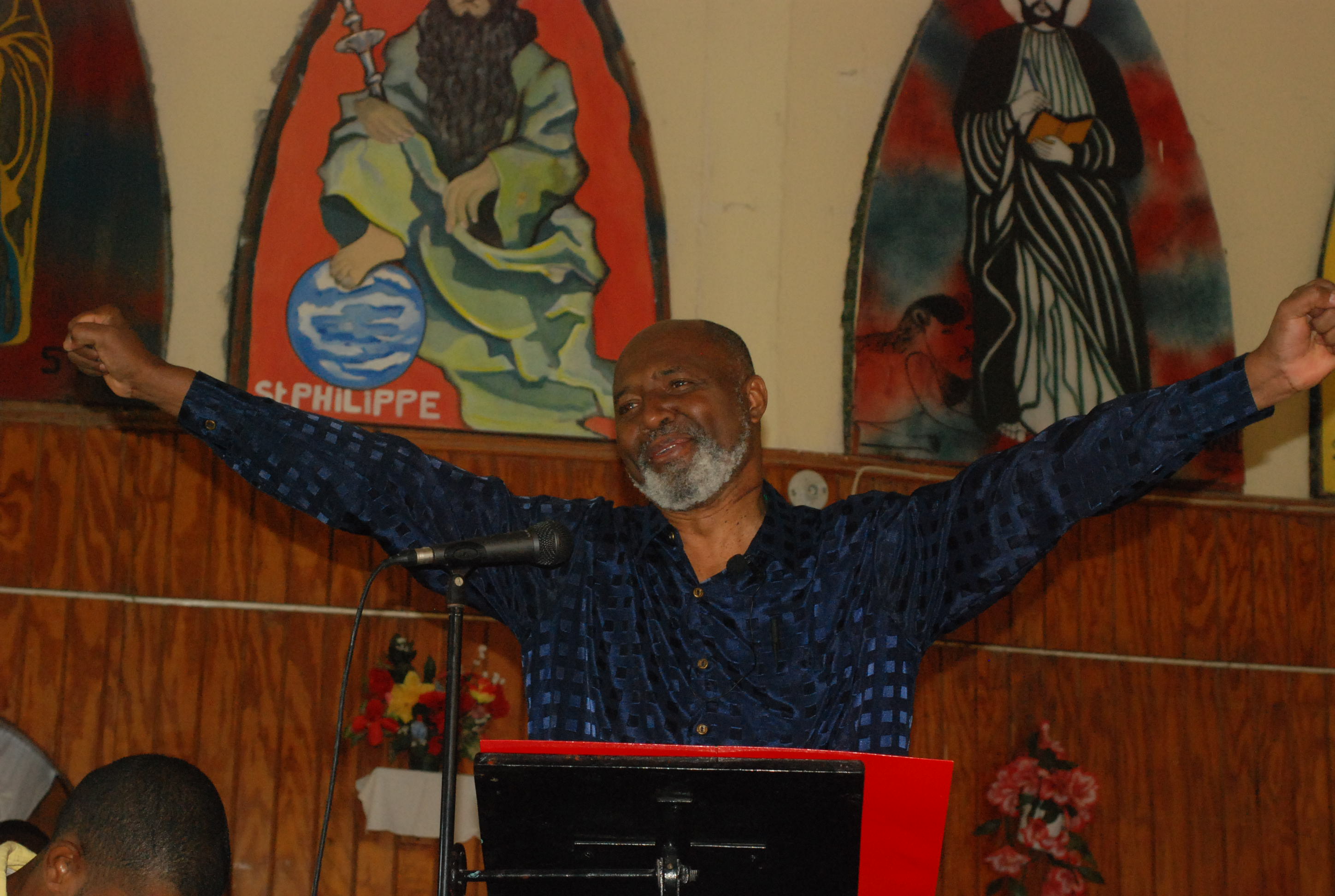
After Aristide’s return in 1994, Jean-Juste became the priest at St. Claire’s Church in the shantytown of Ti Plas Kazo, a bleak warren of tin and cinder-block shacks in the capital’s Delmas district. There he preached and in 2000 set up a program to feed some 1,000 local children daily.
He rose again to national prominence following the February 29th 2004 coup against Aristide. This time he did not go into hiding but instead challenged the democratic pretensions of Washington-installed de facto Prime Minister Gérard Latortue, attending public meetings as a representative of Aristide’s Lavalas Family party.
In response, the de facto government arrested Jean-Juste three times beginning October 13, 2004 on a rotating menu of charges: disturbing the peace, weapons possession, criminal association, treason, and, most preposterously, the July 2005 murder of journalist Jacques Roche.
On July 21, 2005, the day of his final arrest, Jean-Juste was helping to officiate a funeral at St. Pierre’s Church in Pétionville for Roches, who was a distant cousin from Cavaillon. He had been warned by many, including his boss, Bishop Serge Miot, not to attend the mass, but he refused to be intimidated.
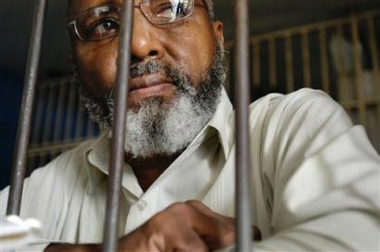
“The church hierarchy knew that the de facto officials were about to kill me,” Jean-Juste said in a June 2006 interview in Miami with the film collective Crowing Rooster Arts. “The plot came from the de facto government,” but had the cooperation of leaders of the coup’s political front, the Group of 184, and the bourgeoisie’s radio stations, he said.
“They stationed a death squad outside the church,” Jean-Juste explained. “This was later to become the coup’s terror force, Lanme Timachet [the Little Machete Army]. They were trained to get me. Some of them didn’t even know me, because at first they went to another priest with a beard. To start the attack, [de facto Culture Minister] Magalie Comeau Denis and another woman began screaming and accusing me of killing Jacques. Then two leaders from the Group of 184 pointed me out to the death squad, and they rushed in my direction. They encircled me.”
The thugs attacked Jean-Juste as he backed away from them up a staircase toward the rectory. A North American lawyer, Bill Quigley, and a young Haitian woman threw themselves between the attackers and the priest. One of the attackers tried to stab Jean-Juste with a spike but wounded the woman instead. Another assailant had a gun but apparently became too afraid to use it. The UN occupation troops, MINUSTAH, belatedly intervened, turning Jean-Juste over to Haitian police, who promptly arrested him because he was accused of Roche’s killing by “public clamor.”
“I learned later that it was a 3 million gourdes plot [$77,000 US],” Jean-Juste said. “The thugs got one million up front, but the balance of two million was to come only after delivering my body.”
In all, Jean-Juste spent some seven months in jail as what Amnesty International called “a prisoner of conscience.” Under pressure from an international human rights campaign, the de facto authorities “provisionally released” Jean-Juste in January 2006 for health reasons after a surreptitious jailhouse examination and blood-drawing by Dr. Paul Farmer revealed the priest was suffering from advanced leukemia. He was flown to Miami and treated at Jackson Memorial Hospital. The leukemia briefly went into remission.
While he was in jail, some Lavalas Family members drafted Jean-Juste to be the party’s presidential candidate in Feb. 7, 2006 elections, despite an official party boycott of the de facto-run polling. However, the de facto electoral council disqualified him.
Once safely back in Miami, Jean-Juste endorsed the candidacy of former President René Préval, who went on to win the election.
Jean-Juste’s defining moment came in Haiti in November 2007, when he appeared before an appeals court which decided not to dismiss the charges against him. When a judge questioned the weapons charge, he pulled something from his pocket and uttered, to the boisterous applause of the courthouse, what has become one of his most famous lines: “My rosary is my only weapon.”
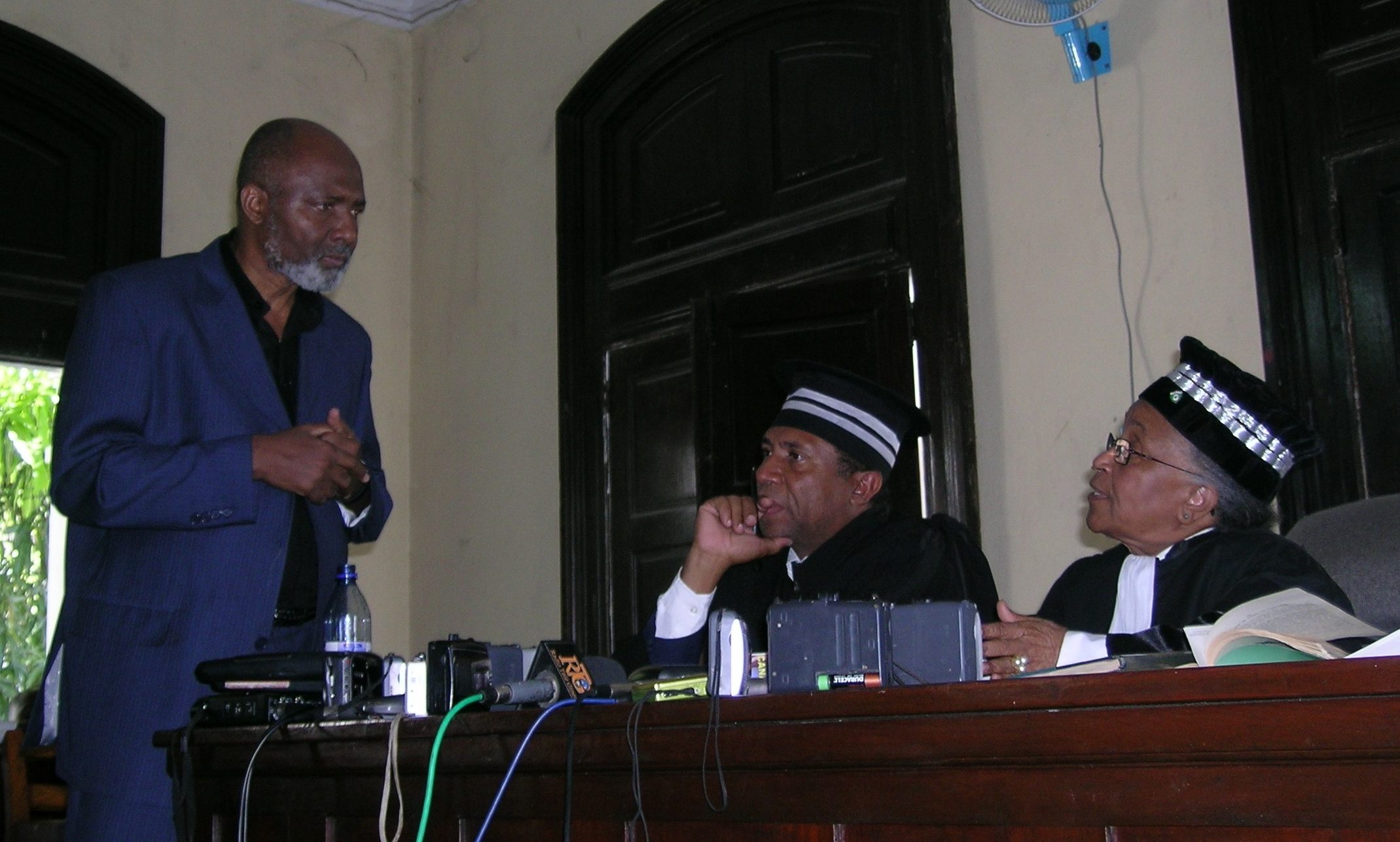
Despite this deeply religious spirit, the Catholic hierarchy prohibited Jean-Juste from carrying out his priestly duties following his 2005 arrest. This sanction deeply hurt Jean-Juste and created psychological stress that contributed to the relapse of his disease in 2009.
Since Jean-Juste’s death, radios, newspapers and the Internet have been filled with glowing, heart-felt tributes to the priest.
“Honor to you, Father Jean-Juste! Respect for you, Gerry, our brother!” wrote Aristide in a long Kreyol poem from exile in Pretoria, South Africa on May 28. “You will always remain living in the spirit of those who love you. That is how you have triumphed over death! The more we take the stars of compliments to give you a crown of recognition, the more we will always remember you.”
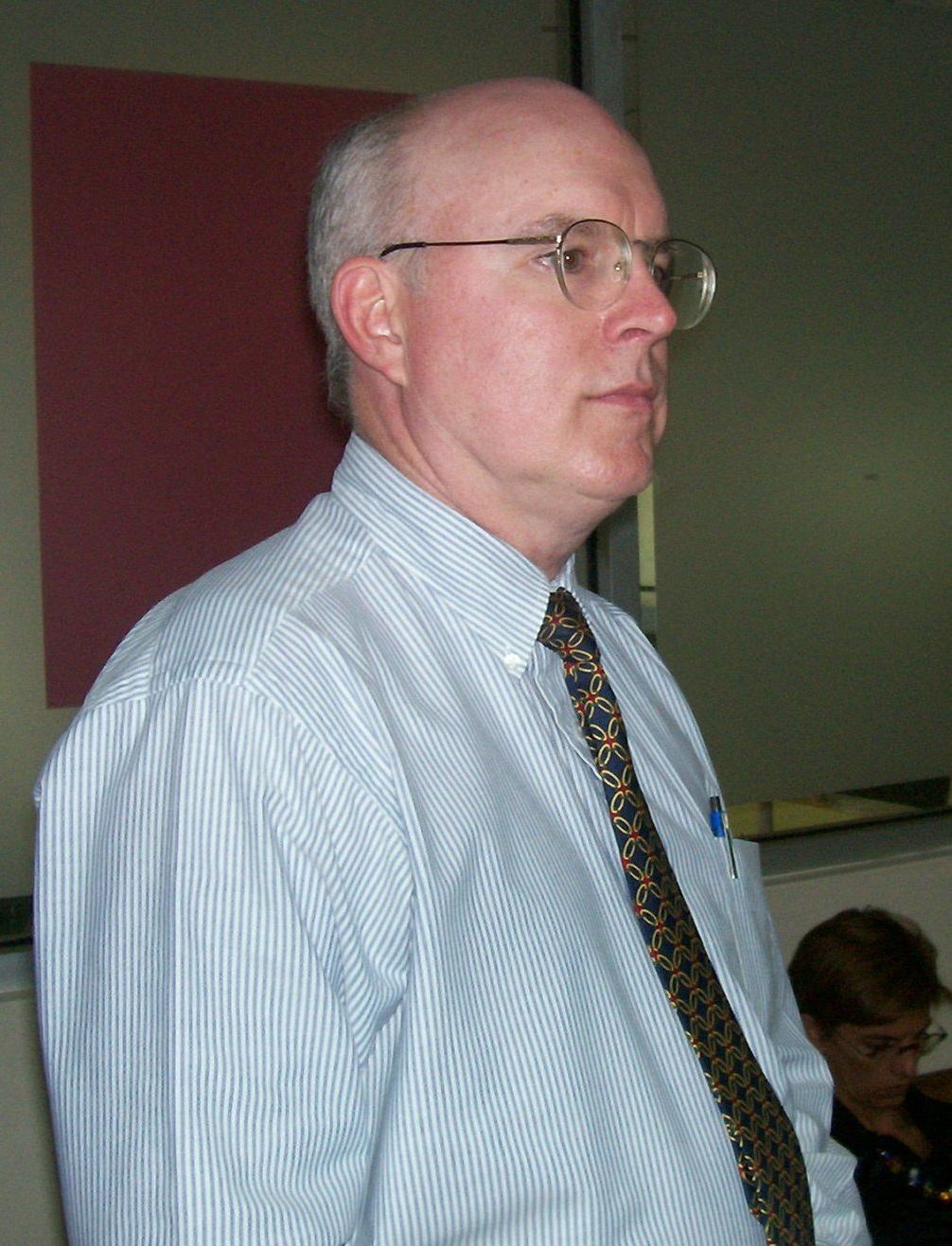
Bell Angelot, a Lavalas leader from Cap Haïtien also wrote a long lyrical tribute. “A powerful spirit has left this earth, and our mourning darkens the whole city,” he wrote. “A griot left for eternity and the whole tribe is in tears. But though the prophet is gone, his light remains.”
“Père Jean-Juste was a Jesus-like revolutionary,” wrote Bill Quigley. “In jail and out, he preached liberation of the poor, release of prisoners, human rights for all, and a fair distribution of wealth.”
Politically, Jean-Juste’s doctrine, if it can be called that, had two principal features. First, he was an assembler, and as such, non-sectarian. The bi-weekly meetings at Veye Yo—on Tuesdays and Fridays—are often visited by people of different political inclinations, sometimes radically different, from Veye Yo. But visitors who want to speak are always granted a microphone. However, they may be confronted afterwards by a Veye Yo leader or audience member. The result is often a cacophonous, and sometimes anarchic, display of ideological struggle at its most democratic.
“Père Jean-Juste was a Jesus-like revolutionary. In jail and out, he preached liberation of the poor, release of prisoners, human rights for all, and a fair distribution of wealth.”
For example, last August, a local Haitian politician came to Veye Yo, an obligatory stop on any Miami campaign trail. After the would-be candidate presented himself and asked for support, Jean-Juste took a microphone and lambasted him for various positions he had taken in recent years. The animated confrontation was followed with rapt attention, and some glee, by the audience.
Secondly, Jean-Juste was truly a man of the people. Aristide became elevated to such symbolic, even mythic, stature that he could only be seen by the masses from afar, usually behind a wall of bodyguards, Father Gerry, however, was readily available to anybody and everybody. He freely gave out his phone numbers and often sat in the midst of the Veye Yo crowd during meetings. In demonstrations, he marched and chanted with the people. He was entirely without any pretensions of grandeur.
This humility and accessibility endeared him to the Haitian masses in both Miami and Ti Plas Kazo, the two principal bases of his support. Tens of thousands are likely to turn out from around the U.S. and Haiti at the Miami exposition, which will happen on Friday, June 5th on NE 54th Street in Miami’s Little Haiti in front of Veye Yo’s headquarters, and at the funeral on Saturday, June 6th at Notre Dame on NE 62nd Street.
It is not yet clear where Jean-Juste will be buried. The family is reportedly split on burying him in Miami or in Haiti.
“It is well-known to everyone that Gerry’s wish was to be buried in Haiti,” Lavarice Gaudin, Jean-Juste’s right-hand man in Veye Yo, told Haïti Liberté. “That is where is heart was, and that is where his body should be.”
Most Haitians are shocked at the thought that Jean-Juste could be buried anywhere other than Haiti. “He no longer belongs to his family,” said Guy Ferdinand, a Lavalas Family leader and former Haitian consul in New York. “He belongs to the Haitian people, and they want him in Haiti, as he would want to be.”
All of us at Haïti Liberté mourn the passing of our dear friend and comrade of many years, Father Gerry Jean-Juste. We will miss his hearty laugh, his regular, encouraging phone calls, and above all, his generous, indomitable, uncomplaining spirit.
We’ll give Father Jean-Juste the final word in this short review of his life. He held a mass meeting at Haïti Liberté during his last visit to New York in October 2007 (see Haïti Liberté, Vol. 1, No. 16, 11/7/2007). In the meeting of over three hours, he expressed his love of Haiti and his conviction to continue the struggle for its liberation.
“In political matters, for us Haitians, it’s a question of life and death,” he told the crowd. “The question of death is not what’s important. It’s the ideas of Martin Luther King which are always primary in my mind. If I don’t help, what will happen to our compatriots?”
[Postscript: There were massive, tearful outpourings at funerals in Miami and Port-au-Prince. Immediately following Haiti’s service, UN troops attempted to arrest a man outside of the church, sparking gunfire in which a mourner was killed. A motorcade bore Father Jean-Juste’s casket to the southern town in which he was born, Cavaillon. There, he was entombed, up a muddy path, in a modest mausoleum.]










